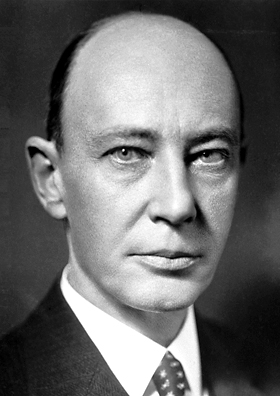George Minot facts for kids
Quick facts for kids
George Minot
|
|
|---|---|
 |
|
| Born | December 2, 1885 Boston, Massachusetts, U.S.
|
| Died | February 25, 1950 (aged 64) Brookline, Massachusetts, U.S.
|
| Nationality | American |
| Alma mater | Harvard University |
| Known for | Anemia Treatment of pernicious anemia |
| Awards | George M. Kober Medal (1929) Cameron Prize for Therapeutics of the University of Edinburgh (1930) Nobel Prize in Physiology or Medicine (1934) |
| Scientific career | |
| Institutions | Johns Hopkins School of Medicine |
George Richards Minot (born December 2, 1885 – died February 25, 1950) was an American doctor and researcher. He won the Nobel Prize in 1934. He shared this important award with George Hoyt Whipple and William P. Murphy. They earned it for their amazing work on a serious blood disease called pernicious anemia. Their discoveries helped save many lives.
Contents
Early Life and Family
George Richards Minot was born in Boston, Massachusetts. His father, James Jackson Minot, was also a doctor. George came from a family of important medical figures. For example, one of his great-grandfathers, James Jackson, helped start the Massachusetts General Hospital. From a young age, George was interested in science and medicine.
Education and Early Research
Minot went to Harvard College and earned his first degree in 1908. He then studied at the Harvard Medical School, getting his medical degree in 1912.
After medical school, he worked at the Johns Hopkins School of Medicine. There, he studied proteins that help stop blood from clotting too much. In 1915, he joined the medical team at Massachusetts General Hospital. This is where he began his important research on blood anemia.
During World War I, Minot served as a surgeon for the U.S. Army. He worked with scientist Alice Hamilton to figure out why workers at a factory were getting sick. They found out that touching a chemical called TNT was making the workers ill.
Medical Career and Discoveries
In 1917, Minot moved to the Collis P. Huntington Memorial Hospital in Boston. He became the chief of medical services there in 1923. By 1934, he was appointed physician-in-chief. He also became a professor of medicine at Harvard University. He directed the Thorndike Memorial Laboratory at Boston City Hospital.
Treating Pernicious Anemia
Minot, along with William P. Murphy and George H. Whipple, made a huge breakthrough. They found an effective treatment for pernicious anemia. This disease was very serious and often fatal at the time.
Their discovery involved feeding patients a special liver concentrate. This concentrate was rich in vitamin B12. Later, scientists realized that vitamin B12 was the key ingredient that helped treat the disease. This discovery changed pernicious anemia from a deadly illness to one that could be managed.
Nobel Prize Recognition
For their life-saving work, Minot, Murphy, and Whipple were awarded the Nobel Prize in Physiology or Medicine in 1934. Minot also received the Cameron Prize for Therapeutics of the University of Edinburgh in 1930.
Living with Diabetes
In 1921, when Minot was 35, he was diagnosed with diabetes mellitus. At that time, diabetes was a very dangerous disease. Dr. Elliott P. Joslin, a leading diabetes doctor, helped him. Dr. Joslin put Minot on a very strict diet to keep him alive.
Around the same time, Frederick Banting and Charles Best discovered insulin. Insulin became widely available about a year after Minot's diagnosis. This new medicine completely changed how diabetes was treated. It kept Minot alive, allowing him to continue his important research. Without insulin, he might not have lived long enough to discover the treatment for pernicious anemia.
Later Life and Legacy
Minot started having more health problems from his diabetes in 1940. In 1947, he had a serious stroke, which left him partly paralyzed. He passed away in Brookline, Massachusetts, on February 25, 1950.
Minot's home in Brookline, Massachusetts, was later named a National Historic Landmark. This was done to honor his incredible contributions to medicine. He and his wife, Marian Linzee Minot, had two daughters and a son.
See also
 In Spanish: George Richards Minot para niños
In Spanish: George Richards Minot para niños

